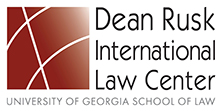Abstract
The increase of merger and acquisition(M&A) activity since 1992 has resulted mainly from a domestic economic recovery. The current M&A trend shows that M&A is still an important means of enhancing many corporations' competitive power and of stimulating growth in such areas as computer software and services, wholesale and distribution, miscellaneous services, banking and finance, and leisure and entertainment. Fundraising for mezzanine-fund financing, which reflects investors' foresight about current and future M&A trends, has also seen rapid growth. After the Tax Reform Act of 1986 and the repeal of the General Utilities doctrine, the elimination of the capital gain preference for corporate taxpayers and the recognition of gain by an acquired corporation making an I.R.C. With respect to debt instruments, the use of debt may be limited in the nontaxable reorganization, but not in a taxable transaction. In addition, the deductibility of debt instruments could render taxable mergers and acquisitions framed by debt instruments much more desirable.
Repository Citation
JANG, TAE OON, "DEBT INSTRUMENTS' TAX TREATMENT IN CORPORATE MERGERS AND ACQUISITIONS" (1998). LLM Theses and Essays. 243.
https://digitalcommons.law.uga.edu/stu_llm/243
Included in
Banking and Finance Law Commons, Business Organizations Law Commons, Commercial Law Commons, Contracts Commons, Taxation-Federal Commons, Taxation-Transnational Commons, Tax Law Commons, Transnational Law Commons


